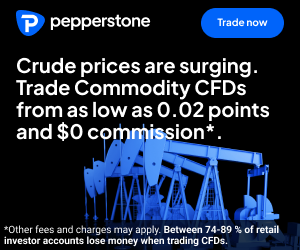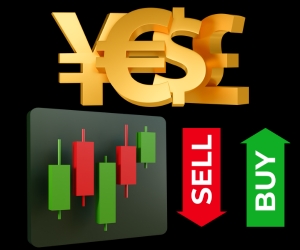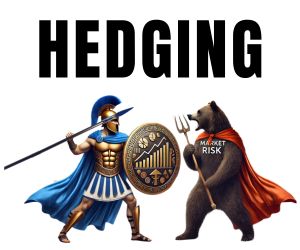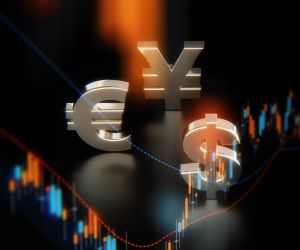SLIPPAGE IN FOREX TRADING AND ITS IMPACT
Slippage occurs when a trade is executed at a different price than expected, creating a gap between intention and outcome. In the fast-moving Forex market, where liquidity and speed are critical, slippage can quickly erode profits or amplify losses. Understanding what slippage is, why it happens, and how to reduce its impact is essential for traders who want consistent execution and reliable risk control.

What Is Slippage
Slippage is one of those trading terms that sounds harmless but can quietly undermine even the best-laid strategies. In simple terms, it describes the difference between the price a trader expects when placing an order and the price at which the order is actually executed. In a market as fast, decentralised, and volatile as Forex, slippage is almost inevitable. The key for traders is not to fear it, but to understand it—because only by recognising how slippage happens and how it affects positions can they learn to manage it.
The Mechanics of Slippage
When you click “buy” or “sell” on your trading platform, you are essentially sending an instruction to your broker to match your order with a counterparty at the best available price. In an ideal world, the price displayed on the screen is the price you receive. In reality, prices shift constantly—sometimes within milliseconds. If the market moves between the time you place the order and the time it is filled, the execution price may differ from your intended price. That difference is slippage.
For example, suppose a trader intends to buy EUR/USD at 1.1000. By the time the order is executed, liquidity has thinned and the best available price is 1.1002. The two-pip difference is slippage. Depending on the size of the position and the volatility of the market, even small amounts of slippage can have a meaningful impact on profitability. While a two-pip change may not sound like much, on a position of one million euros, it represents a $200 cost. Multiply that by dozens of trades, and slippage can turn a profitable system into a breakeven one.
Positive vs. Negative Slippage
It is worth noting that not all slippage is harmful. Traders often assume slippage always works against them, but that is not strictly true. When an order is executed at a better price than requested, the result is known as positive slippage. If you try to buy EUR/USD at 1.1000 and are filled at 1.0998, you have effectively gained two pips. While positive slippage is less common than negative slippage—especially in volatile conditions—it demonstrates that slippage is not inherently bad. It is simply the gap between intention and reality in a dynamic market.
Still, most traders focus on negative slippage, where the executed price is worse than expected. This tends to occur in periods of high volatility or low liquidity, when spreads widen and order matching becomes more difficult. The challenge is that negative slippage usually appears at precisely the moments when traders can least afford it—during news announcements, sudden breakouts, or periods of thin market depth.
How Slippage Is Measured
Slippage is typically measured in pips, the smallest unit of price movement in most currency pairs. If a trader requests an order at 1.2500 and is filled at 1.2503, the slippage is three pips. Some brokers and institutional traders track slippage as a percentage of the spread or as a dollar cost per million traded. However, for retail traders, thinking in terms of pips per trade is the simplest way to grasp its significance.
Importantly, slippage should be distinguished from spreads and commissions. Spreads are the broker’s quoted difference between bid and ask prices, while commissions are explicit fees. Slippage, by contrast, is the hidden cost of execution uncertainty. Two traders using the same broker may face different levels of slippage depending on the timing of their orders and the conditions in the market.
Why Slippage Matters in Forex
Forex is uniquely prone to slippage compared with other markets. Unlike equities, which are often traded on centralised exchanges, Forex operates through a global network of banks, brokers, and electronic platforms. This decentralisation means that there is no single “last price” for a currency pair at any given moment. Prices update continuously across venues, and discrepancies between them can result in slippage for traders, especially when executing large orders.
Moreover, Forex is highly leveraged. A small deviation in price can have an outsized effect on account balances. For example, with 50:1 leverage, a move of just five pips against a $100,000 position can wipe out $500 of equity. When slippage magnifies that move, the impact on risk and capital management becomes even more significant.
Examples in Real Market Conditions
To see slippage in action, consider the release of a major economic report such as U.S. nonfarm payrolls. Liquidity providers often pull quotes in the seconds before the announcement, leading to thin order books. When the data surprises markets, price can gap instantly by dozens of pips. Traders who attempt to enter or exit positions at that moment may find their orders filled far away from their intended levels, suffering significant slippage. Similarly, during the Asian trading session, when liquidity is typically lower, even modest orders can move the market and result in fills at less favourable prices.
Case studies from the Swiss franc shock of January 2015 highlight slippage at its most extreme. When the Swiss National Bank abandoned its currency cap against the euro, EUR/CHF collapsed by nearly 30% in minutes. Many traders found their stop-loss orders executed not at the levels they had set, but hundreds of pips away, due to the absence of liquidity. This catastrophic slippage bankrupted accounts and even some brokers, underscoring how real and devastating the phenomenon can be.
The Psychological Side of Slippage
Slippage also carries a psychological burden. Traders who experience repeated negative slippage may lose confidence in their systems, even if the strategies themselves are sound. The sense that the market is “cheating” them can lead to overtrading, chasing losses, or abandoning a plan altogether. Experienced traders learn to anticipate slippage and to build it into their risk models. Rather than treating it as an anomaly, they see it as a cost of doing business in a fast market, much like spreads or commissions.
Slippage vs. Requotes
Another concept often confused with slippage is the requote. A requote occurs when a broker cannot fill an order at the requested price and asks the trader to confirm execution at a new price. While both situations reflect execution uncertainty, the distinction is that slippage results in automatic fills at a different price, while requotes require explicit trader approval. In today’s electronic trading environment, requotes are less common, but slippage remains ever-present.
Why Traders Cannot Eliminate Slippage
It is important to accept that slippage cannot be eliminated entirely. Because market prices are determined by supply and demand in real time, no broker or platform can guarantee perfect fills under all conditions. Even algorithms designed for high-frequency execution cannot always avoid slippage when liquidity disappears. The goal, therefore, is not to eliminate slippage but to understand its patterns, manage its effects, and minimise its cost relative to the potential rewards of trading.
Causes in Trading
Slippage does not appear out of thin air. It has identifiable causes rooted in how the foreign exchange market operates and how orders interact with liquidity. By breaking down these causes, traders can better predict when slippage is likely to occur and adapt their strategies accordingly. While the exact drivers vary depending on market conditions, most cases of slippage can be traced back to liquidity gaps, volatility surges, order type, and technology limits.
Liquidity Shortages
Liquidity—the ability to buy or sell without moving the price—is the single most important factor influencing slippage. In deep markets where multiple buyers and sellers line up across tight spreads, orders can usually be filled at or near the requested price. But in thin markets, even small orders can exhaust available quotes, forcing execution at worse levels. Liquidity shortages are common during off-hours trading sessions, such as late in the New York afternoon or early in the Asian session, when fewer participants are active.
Events that drain liquidity include holidays, unexpected geopolitical shocks, and central bank interventions. For example, when the Bank of Japan intervenes in currency markets, traders often pull quotes temporarily, unwilling to take the other side of unpredictable moves. The result is a sudden vacuum in the order book, where slippage can spike dramatically.
Volatility Spikes
Volatility is the second major driver of slippage. When prices move rapidly, the gap between a trader’s click and the broker’s fill widens. Economic data releases such as U.S. jobs reports or inflation readings routinely generate sharp moves in currency pairs. Even with abundant liquidity, the sheer speed of price changes can mean that the level visible on a screen is already outdated by the time an order hits the market.
Volatility-driven slippage is not always negative. Traders who enter with limit orders sometimes benefit from positive slippage if prices overshoot in their favour. Still, more often than not, volatility introduces uncertainty that tilts the odds against precise execution.
Order Types and Execution Styles
The type of order a trader uses plays a decisive role in slippage. Market orders, which instruct brokers to fill at the best available price, are most vulnerable because they prioritise speed over price. Limit orders, by contrast, specify the maximum or minimum price at which a trader is willing to transact, effectively capping slippage risk. However, the trade-off is that limit orders may not be filled at all if the market does not reach the specified level.
Stop-loss orders are also susceptible to slippage, particularly in fast-moving markets. When a stop is triggered, it becomes a market order, subject to whatever price is available. This explains why stop orders placed around major support or resistance levels can be executed far away from intended prices when breakouts occur.
Brokerage Models
Different brokerage models also affect the likelihood of slippage. Dealing desk brokers sometimes absorb part of the slippage by filling clients at quoted prices and offsetting risk internally. Non-dealing desk brokers, who route orders directly to liquidity providers, typically pass slippage through to the client. Neither model is inherently better; the key is transparency. Traders should know whether their broker executes “at best price available” or offers protections such as guaranteed stop-losses.
Execution speed is another factor. A broker with low-latency connections and advanced infrastructure can process orders more quickly, reducing the window in which slippage can occur. By contrast, slow execution pipelines amplify the risk that prices will shift before an order is confirmed.
Technology and Connectivity
Technology can either mitigate or exacerbate slippage. High-frequency trading systems and co-location services, where traders place servers near exchange data centres, are designed to reduce delays. Retail traders, however, often face longer data transmission times, especially if they rely on unstable internet connections or underpowered devices. Even a delay of 100 milliseconds can make the difference between a clean fill and a costly slip in a fast market.
Connectivity problems at the trader’s end can also cause apparent slippage. If an order is transmitted late due to lag or system overload, the execution price may deviate significantly from the price originally displayed. This technical slippage underscores the importance of reliable infrastructure, particularly for active day traders and scalpers.
Market Gaps
Another common cause of slippage is the market gap. A gap occurs when prices jump from one level to another without trading in between. This often happens after weekends or holidays, when new information emerges outside market hours. For example, if a central bank announces a surprise rate cut on a Sunday, the Monday opening price for its currency may be far removed from Friday’s close. Traders who left stop-loss orders in place may find themselves filled at the opening level, which could be dozens or even hundreds of pips away from their intended stop price.
Gaps can also occur intraday, particularly in illiquid crosses or exotic pairs. Unlike major pairs such as EUR/USD, which trade almost continuously, less popular pairs may see wide jumps in price when a large order hits the market. These jumps can bypass stop levels entirely, leaving traders exposed to larger-than-expected losses.
Human and Algorithmic Behaviour
Finally, slippage can result from the behaviour of other traders and algorithms. In today’s markets, automated trading systems react to news and price movements in fractions of a second, often crowding into the same trades. When thousands of algorithms chase momentum simultaneously, liquidity can vanish in an instant, and slippage spikes. Human traders can also contribute, particularly during panic or euphoria, when waves of stop orders cascade through the market, overwhelming available liquidity.
The 2010 “flash crash” in U.S. equities, though not a Forex event, illustrates how quickly algorithmic behaviour can drain liquidity and cause extreme slippage. In currencies, similar dynamics occur on a smaller scale almost daily, especially around economic surprises.
Putting the Causes Together
In reality, slippage rarely has a single cause. More often, it is the product of multiple factors converging at once: a thin market hit by unexpected news, with traders using vulnerable order types and brokers struggling to keep up. For this reason, traders must think of slippage not as a random misfortune but as the predictable outcome of specific conditions. By mapping those conditions—low liquidity, high volatility, sensitive order types, and technological bottlenecks—traders can better prepare for slippage and integrate it into their risk management framework.
Reducing Its Impact
Slippage cannot be eliminated entirely, but traders can take practical steps to limit how often it occurs and how much damage it causes when it does. Reducing its impact requires a combination of risk management, smart order placement, and technology choices. The aim is not perfection—because slippage is woven into the fabric of fast-moving markets—but consistency. By minimising the frequency and size of slippage, traders preserve their edge and ensure their strategies perform closer to their intended design.
Choosing the Right Order Types
The first line of defence is the type of order a trader uses. Market orders, while fast, leave traders vulnerable to execution at unexpected levels. To mitigate this, many traders rely on limit orders, which guarantee that no trade is executed worse than the specified price. While the trade-off is the possibility of missed fills, this approach prevents catastrophic slippage during volatile conditions.
Stop-limit orders provide another layer of control. Unlike traditional stop-loss orders, which convert into market orders when triggered, stop-limit orders execute only if the market remains within the trader’s defined boundaries. This tool can reduce the risk of being filled far away from intended prices during gaps or news-driven spikes. However, traders must accept that in fast-moving markets, stop-limit orders may not execute at all, leaving positions open longer than expected.
Trading During High-Liquidity Hours
Liquidity is not constant throughout the day. The overlap between London and New York trading sessions typically offers the deepest liquidity and narrowest spreads, making it the most favourable window for execution. By contrast, trading during late Asian hours or holiday periods exposes traders to thinner order books and higher slippage risk. Aligning trading activity with peak liquidity hours is a simple yet effective way to reduce execution surprises.
For example, entering a large EUR/USD position during the London–New York overlap is far more likely to result in a clean fill than doing so during the final hour of New York trading. Institutional traders carefully time their order flow for this reason, and retail traders can adopt the same discipline.
Avoiding Major News Announcements
Economic news releases are notorious for causing slippage. U.S. nonfarm payrolls, Federal Reserve announcements, and inflation data routinely produce price moves that outpace normal execution systems. For traders not specifically targeting news events, avoiding order placement during these windows is one of the most reliable ways to reduce slippage. Keeping an economic calendar on hand and steering clear of the most volatile announcements can preserve capital and reduce unnecessary stress.
For those who do trade news, the key is preparation. Using smaller position sizes, wider stop-losses, or pre-defined entry strategies helps control the inevitable slippage that comes with such events. Professional traders often split orders into smaller chunks to reduce market impact, a practice retail traders can adapt on a smaller scale.
Working with Reliable Brokers
Broker choice plays a central role in slippage management. Transparent brokers disclose average execution speeds and slippage statistics, allowing traders to evaluate the quality of fills. Some brokers even offer guaranteed stop-losses, which, for an added fee, ensure that trades close at specified levels regardless of market conditions. While no broker can prevent all slippage, those with robust infrastructure and multiple liquidity providers can dramatically reduce its frequency.
It is also worth understanding a broker’s execution model. Straight-through processing (STP) and electronic communication networks (ECNs) typically provide faster, more transparent fills than dealing desk models. While ECN spreads may appear narrower, traders should also weigh commission costs and minimum trade sizes to ensure the model aligns with their strategy.
Using Technology to Your Advantage
Technology is both a source of slippage and a solution to it. Traders using outdated hardware or unstable internet connections are at a disadvantage. Upgrading equipment, securing low-latency connections, and ensuring reliable access to trading platforms can make a tangible difference in execution quality. Many professional traders also use virtual private servers (VPS) located near broker data centres to reduce transmission delays.
Algorithmic trading tools, such as execution algos, can also help manage slippage. These programs break large orders into smaller ones, execute gradually, and seek liquidity across multiple venues. While retail traders may not have access to the most advanced algos, even simple automation—such as one-click trading or scripts that pre-load orders—can reduce the delays that lead to slippage.
Managing Position Size
Large orders are more prone to slippage because they consume more liquidity. By scaling down position sizes or splitting trades into multiple smaller orders, traders reduce the market impact of each transaction. While this approach may slightly increase transaction costs, it often results in more predictable fills overall. This principle is particularly important in less liquid pairs, such as exotic currencies, where order books are shallow.
Building Slippage into Risk Models
Even with all precautions, some slippage will occur. The most disciplined traders accept this and incorporate slippage estimates into their risk management frameworks. For example, if backtests suggest an average of two pips of slippage per trade, the trader may reduce target profit margins to account for this hidden cost. Similarly, they may widen stop-loss buffers slightly to avoid being knocked out prematurely by execution differences.
By treating slippage as a constant rather than a surprise, traders ensure that strategies remain robust under real market conditions. This proactive mindset separates professionals, who expect slippage and plan accordingly, from novices, who are blindsided when their fills deviate from expectations.
Case Study: Reducing Slippage in Scalping
Scalpers are particularly sensitive to slippage because their strategies depend on capturing small price movements. A trader aiming for five pips per trade cannot afford to lose two pips to slippage on average. Successful scalpers therefore go to great lengths to minimise execution risk: trading only during peak liquidity, using direct-market-access brokers, employing VPS servers, and avoiding volatile announcements. By combining these techniques, they can preserve the slim profit margins on which scalping strategies rely.
The Long-Term View
Ultimately, slippage is not something to eliminate but to control. Over a long enough time horizon, traders who consistently reduce slippage gain a significant edge. Just a one-pip improvement per trade can add up to thousands of dollars in annual profits for active traders. More importantly, by smoothing execution, traders build confidence in their systems and maintain discipline. That confidence, in turn, supports better decision-making, which is often the real driver of success in Forex markets.








